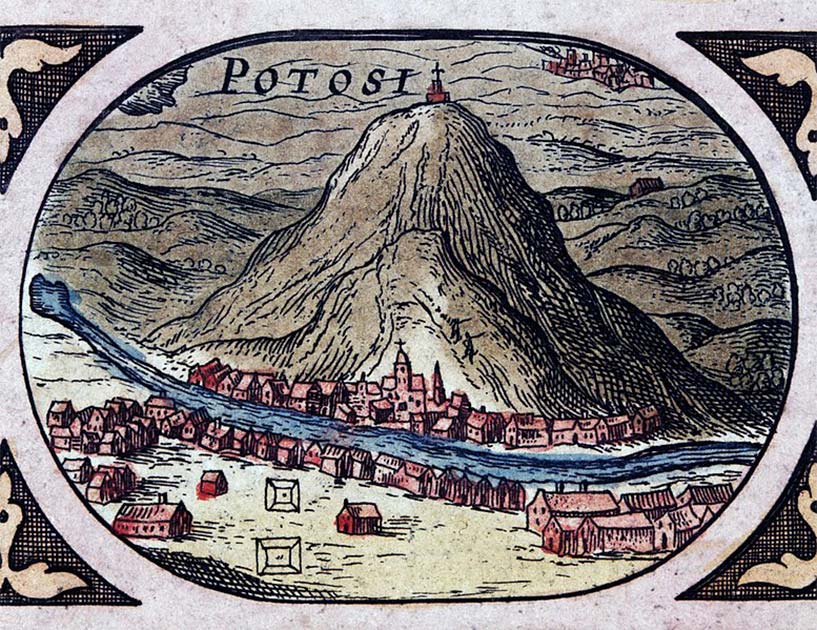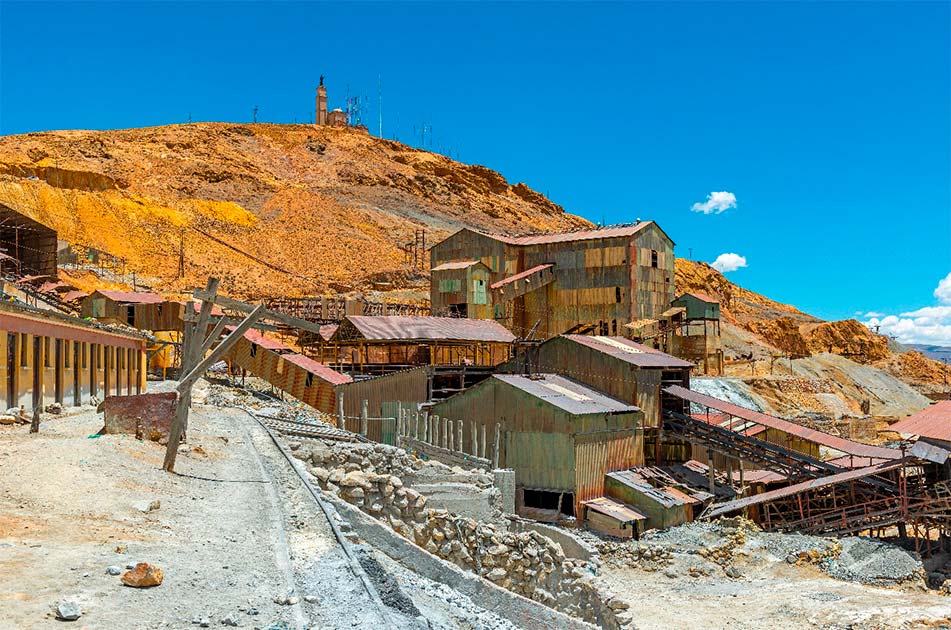Cerro Rico de Potosi, a mountain that gave the world an immense amount of silver, is also a vicious death sentence for the miners.
Cerro Rico de Potosi, in Bolivia, is a hell of our own making. The town of Potosi at its base, high in the Bolivian Andes, hides of legacy of millions of deaths, and an enormity of human suffering, all in the pursuit of wealth.
People call it the silver mountain that eats up the people who work there. Potosi is the land of terrors, which is a symbol of human suffering, horror and death. But simultaneously, it is an astounding beauty for the explorers.
What happened to the mountain? Why did it kill so many, and why did so many more brave the dangers of Potosi?
An Unimaginable Discovery
In 1545, a shepherd named Diego Huallpa was grazing his flock of sheep on the hill’s slopes, and was about to make a crucial discovery. Diego settled down on the mountain slope to light a warm fire. But to his astonishment, he saw his flames strangely reflected by something under the soil that seemed to glow.
Diego accidentally found Potosi’s secret: an enormous deposit of silver ore around the site. The news was quickly spread across all of the Spanish Empire, reaching Madrid and the ear of the King. Potosi itself became famous overnight, and quickly grew to become one of the largest high-altitude towns in the world.

The region of Potosi had been long inhabited by the Chullpas and Charcas people. They lived alongside each other util the 16th century arrival of the Inca. They were then forced into slavery, and the harsh mining of silver commenced.
There was a prophecy that the mineral from this mountain wasn’t for the Incas but for someone else. And it came true as the Spanish took control of Potosi and the mines. After the Spanish conquistadors took control of the region, they forced the Incas alongside the existing workers to continue mining for silver. And people have been dying on that mountain ever since.
Potosi as a town was at its richest during the period of Spanish control. It then had several pavements made out of silver, theaters, a Royal Mint, palaces, churches and much more. But this was transitory, and once the silver mining was established and the easy money had been made, wealth started to funnel elsewhere and the town started to stagnate.
Soon, there were only a few thousand people left in the city, and as of today, Potosi is just small town in the shadow of an enormous mountain. But by now that mountain has produced a staggering amount of silver: it is said that the amount of silver dug out of Cerro Rico de Potosi can be used to build an entirely silver bridge from Bolivia to Madrid.
But there’s another saying which relates to the people who have lost their lives while mining these silver ores. It is said that the bones of people who died in Cerro Rico de Potosi can be used to make two bridges of the same length.
Why So Deadly?
Put simply, the risk was worth the reward. Cerro Rico de Potosi was for a while there the supplier of silver to the entire world.
The silver period of this mountain is dated back to the era of 1575 to 1635. During these years, Cerro Rico produced more than half the amount of the world’s silver. But even after the era ended and the wealth dropped, the mines still yielded silver.
By 1678, most of the native workers had left the city, and the output from mines was suppressed. Even on a smaller scale, the medieval technologies of the Potosi were still able to mine some amount of silver from Cerro Rico.
According to the reports and historical evidence, around eight million people have died in the Potosi mines. Most of these people were either locals pressed into slavery, or African imported slaves. It is said that miners used to live entirely underground for six months or more, working 20 hours a day.
Some people died from exhaustion, choked on the dust or from the rampant disease in the tunnels, while many others were killed due to tragic accidents. Apart from these mishaps, many workers have even killed themselves out of despair. All of these and more are recorded as negative traits of Cerro Rico de Potosi.
- The “Hand Made Mountain”: Cholula, the Largest Pyramid in the World
- The Secret of Lake Nyos: How Did 1,800 People Die Overnight?
One of the most common diseases that kills most men at this site was silicosis. It is a lung disorder triggered in people after prolonged breathing within the rock particles. Once men enter the mountain, their life starts to shorten from that moment on. Most Potosi miners would die from this disease before they turn 40.

Thus, this site was declared forgotten and was called a land of genocide. There is no man or woman on this mountain who would like their children to work at this place. Locals call it the mountain that eats men. The Spanish empire was afloat with richness, while the workers and slaves were dying under the grasp of this deadly mountain.
Today, tourists and explorers visit Potosi to witness how harsh the working conditions were for the slaves and miners. Travelers suffering from claustrophobia are not advised to visit this place, as they might experience severe symptoms in the narrow, dark tunnels.
A Tragic Legacy
Today, Potosi does not reflect what it was in the past. From being one of the richest and most populated cities to one of the poorest major cities in Bolivia and the world, this place has seen everything. People blame Cerro Rico for the demise of Potosi.
Potosi today is struggling in Bolivia’s fragile economy. Worse, the mountain itself is predicted to collapse due to intensive mining throughout history. Thus, the fragile economy will perish, and soon the city itself could fail entirely.
Even today, it’s said that the miners die here at Cerro Rico. On average, around 14 miners die every month at this site.
Top Image: The town of Potosi, with Cerro Rico de Potos towering above, the mountain that eats men. Source: Rafal Cichawa / Adobe Stock
By Bipin Dimri